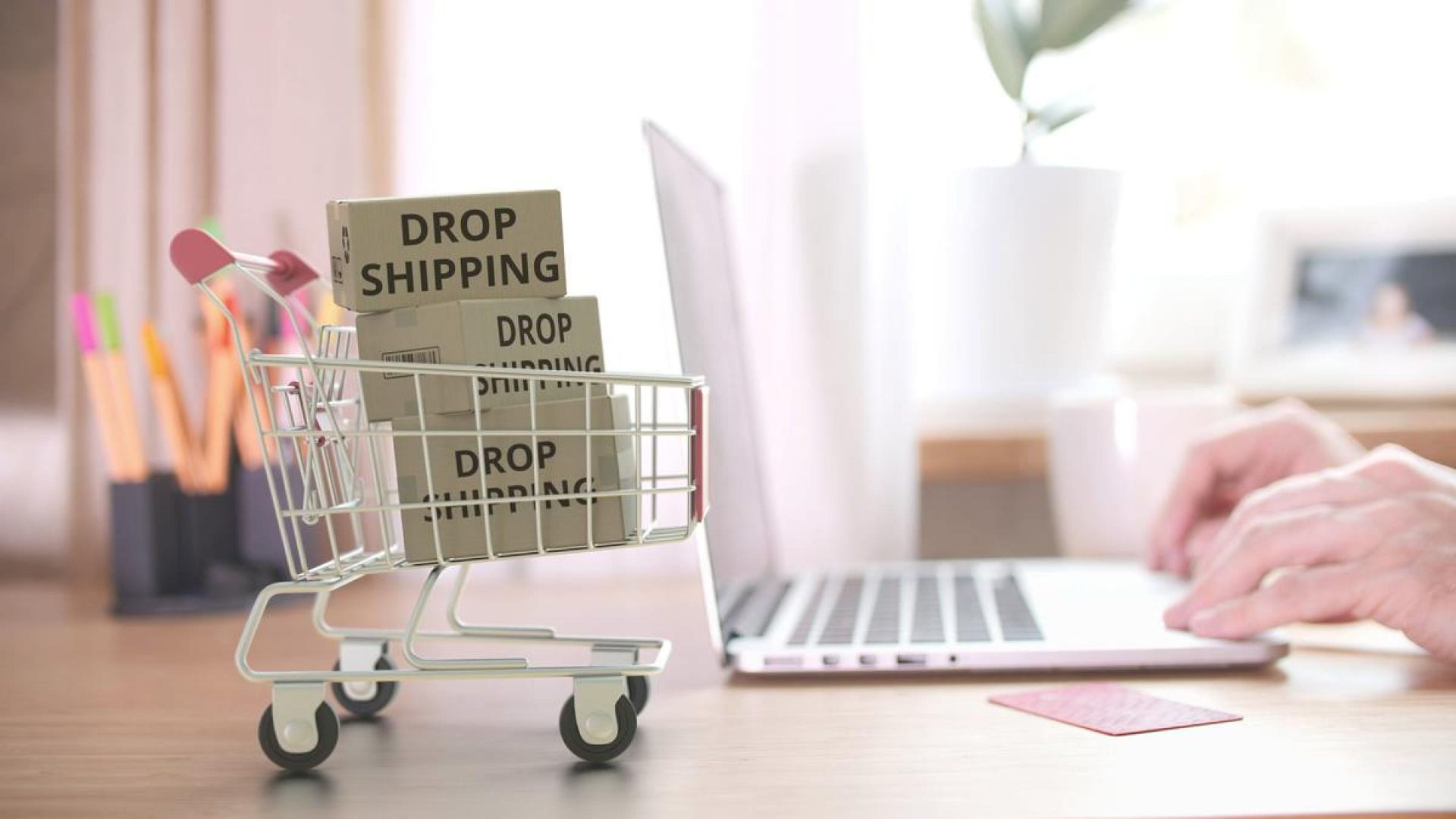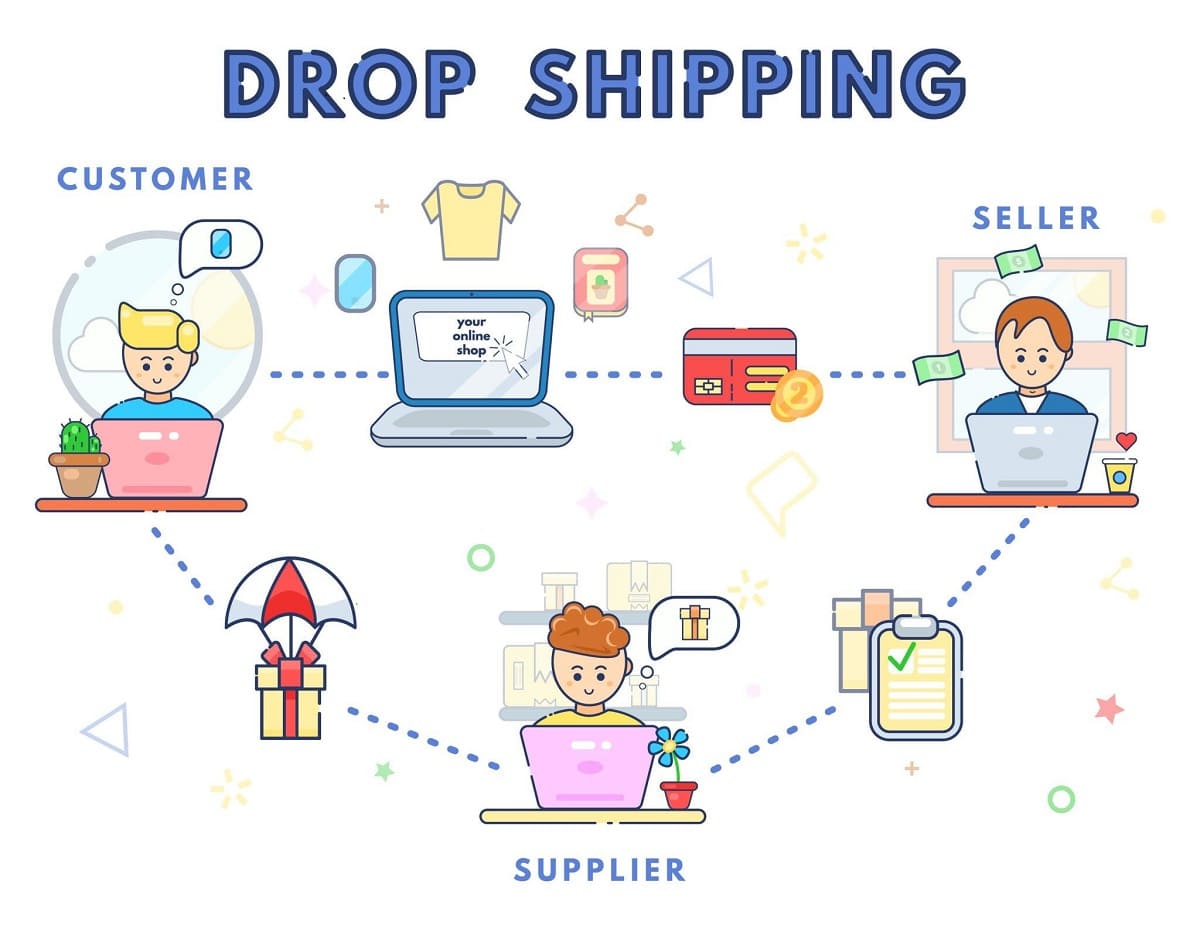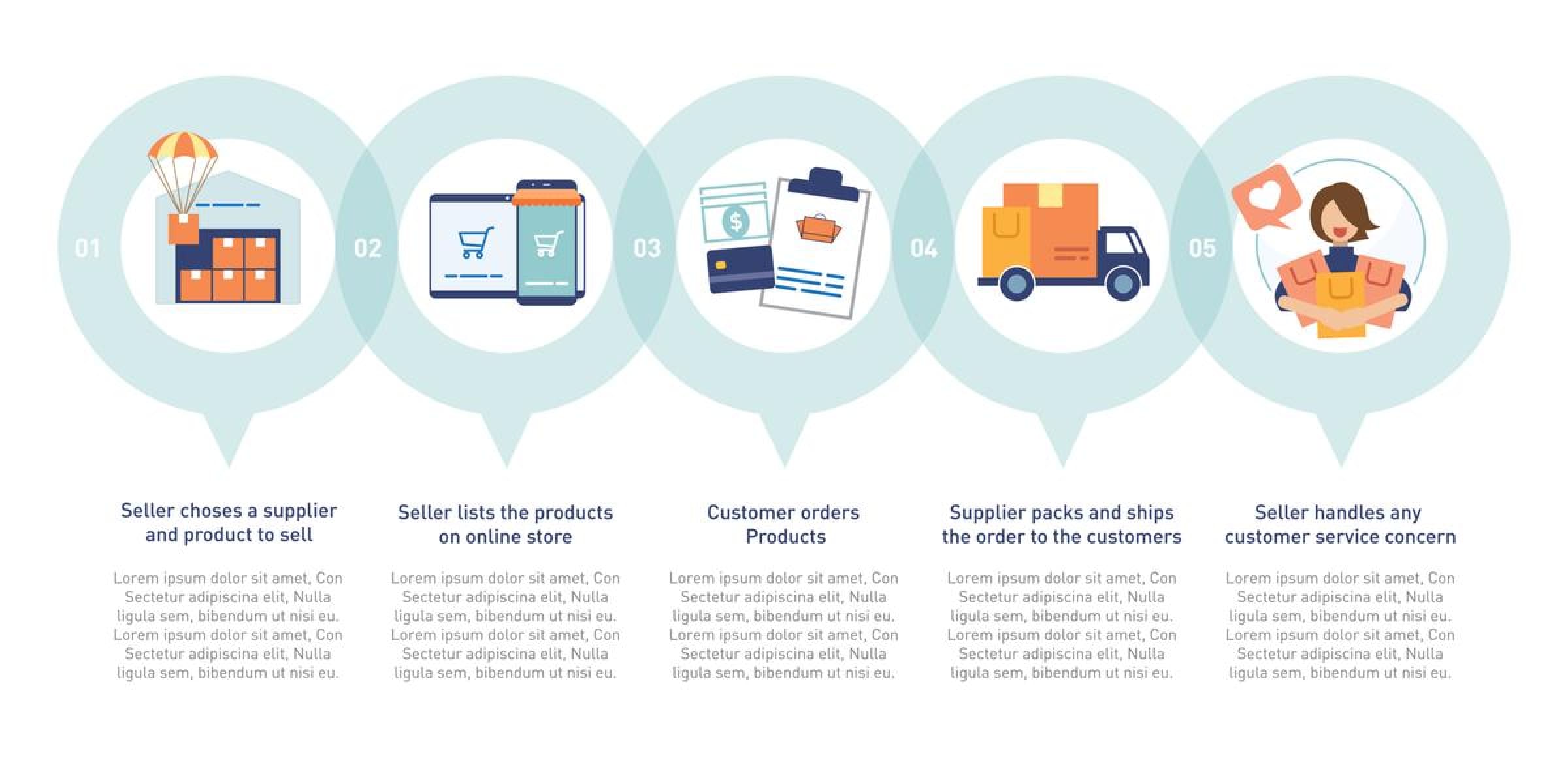
What Is Dropshipping? How Does Dropshipping Work In 2023?
Dropshipping is a retail fulfillment method where a store doesn’t keep the products it sells in stock. Instead, when a store sells a product using the dropshipping model, it purchases the item from a third party—usually a wholesaler or manufacturer—and has it shipped directly to the customer. As a result, the selling merchant doesn’t stock or own inventory—they act as the middleman.
What is dropshipping?
Dropshipping is a retail fulfillment method where a store doesn’t keep the products it sells in stock. Instead, when a store sells a product using the dropshipping model, it purchases the item from a third party—usually a wholesaler or manufacturer—and has it shipped directly to the customer. As a result, the selling merchant doesn’t stock or own inventory—they act as the middleman.
How does dropshipping work?
Here’s how dropshipping works in more detail:
- A customer places an order at a dropshipping store.
- The dropshipper forwards the order to their supplier.
- The supplier ships the product directly to the customer.
- The customer receives the product and the dropshipper keeps the profit.
Types of dropshipping
There are two main types of dropshipping:
- Domestic dropshipping: This is when the dropshipper and their supplier are located in the same country. This is the most common type of dropshipping, and it typically offers the fastest shipping times.
- International dropshipping: This is when the dropshipper and their supplier are located in different countries. This type of dropshipping can be more complex and time-consuming, since the products have to be shipped through customs.
Choosing a dropshipping niche
When choosing a dropshipping niche, there are a few things you should keep in mind:
- Profitability: Choose a niche that offers profitable products. You can research product profitability using tools like Google Trends and Amazon Best Sellers.
- Demand: Choose a niche that has high demand. You can research product demand using tools like Google Keyword Planner and social media listening tools.
- Competition: Choose a niche with moderate competition. You don’t want to choose a niche with too much competition, or it will be difficult to rank your products in search results.
Finding reliable dropshipping suppliers
Once you’ve chosen a niche, you need to find reliable dropshipping suppliers. There are a number of different ways to find suppliers, such as:
- Online directories: There are a number of online directories that list dropshipping suppliers. Some popular directories include SaleHoo, Oberlo, and Doba.
- Social media: You can also find dropshipping suppliers on social media platforms like LinkedIn and Facebook.
- Trade shows: Trade shows are a great way to meet dropshipping suppliers in person.
Benefits of dropshipping
Dropshipping has a number of benefits, including:
- Low startup costs: Dropshippers don’t need to invest in inventory upfront, which makes it a relatively low-cost way to start an online business.
- Easy to set up: Dropshipping is relatively easy to set up and manage, even for beginners.
- Wide range of products to sell: Dropshippers can sell a wide range of products without having to worry about stocking or shipping inventory.
- Scalability: Dropshipping is a scalable business model, meaning that you can easily grow your business without having to invest in more inventory or warehouse space.
Drawbacks of dropshipping
However, there are also some drawbacks to dropshipping, such as:
- Low profit margins: Dropshippers typically have lower profit margins than traditional retailers, since they have to pay their suppliers for the products they sell.
- Less control over the customer experience: Dropshippers have less control over the customer experience, since their suppliers are responsible for shipping the products.
- More competition: Dropshipping is a popular business model, so there is a lot of competition in the market.
How to start a dropshipping business
If you’re interested in starting a dropshipping business, there are a few things you need to do:
- Choose a niche: What kind of products do you want to sell? It’s important to choose a niche that you are passionate about and that you have some knowledge of. This will help you to choose the right products to sell and to market your business effectively.
- Find reliable suppliers: Once you’ve chosen a niche, you need to find reliable suppliers who sell the products you want to sell. It’s important to read reviews of different suppliers before you choose them. You should also make sure that your suppliers offer competitive prices and fast shipping times.
- Set up your store: Once you’ve found suppliers, you need to set up your online store. There are a number of different dropshipping platforms available, such as Shopify and WooCommerce. These platforms make it easy to set up and manage your store.
- Market your store: Once your store is set up, you need to start marketing it to potential customers. There are a number of different ways to market your store, such as search engine optimization (SEO), social media marketing, and paid advertising.
Setting up your dropshipping store
Once you’ve found suppliers, you need to set up your dropshipping store. There are a number of different dropshipping platforms available, such as Shopify, WooCommerce, and Magento. These platforms make it easy to set up and manage your store.
Marketing your dropshipping store
Once your store is set up, you need to start marketing it to potential customers. There are a number of different ways to market your store, such as:
- Search engine optimization (SEO): SEO is the process of optimizing your website so that it ranks higher in search engine results pages (SERPs). You can improve your SEO by using relevant keywords throughout your website and creating high-quality content.
- Social media marketing: Social media marketing is a great way to connect with potential customers and promote your products. You can use social media platforms like Facebook, Twitter, and Instagram to share photos and videos of your products, run contests and giveaways, and offer customer support.
- Paid advertising: Paid advertising is a great way to reach a wider audience and promote your products. You can use paid advertising platforms like Google AdWords and Facebook Ads to target your ads to specific demographics and interests.
Tips for success with dropshipping
Here are some tips for success with dropshipping:
- Provide excellent customer service: Even though you don’t have direct control over the shipping process, you’re still responsible for providing excellent customer service. Respond to customer inquiries promptly and professionally, and be willing to go the extra mile to resolve any issues.
- Build your brand: It’s important to build a strong brand for your dropshipping business. This will help you to stand out from the competition and attract customers. You can build your brand by creating a unique logo and website design, and by using consistent branding across all of your marketing materials.
- Offer competitive prices: You need to price your products competitively in order to attract customers. However, you also need to make sure that you’re making a profit on each sale.
- Track your results: It’s important to track your results so that you can see what’s working and what’s not. You can use tools like Google Analytics to track your website traffic, sales, and other metrics.
Conclusion
Dropshipping can be a great way to start an online business with low startup costs and minimal upfront investment. However, it’s important to be aware of the drawbacks before you get started. By following the tips above, you can increase your chances of success with dropshipping.


